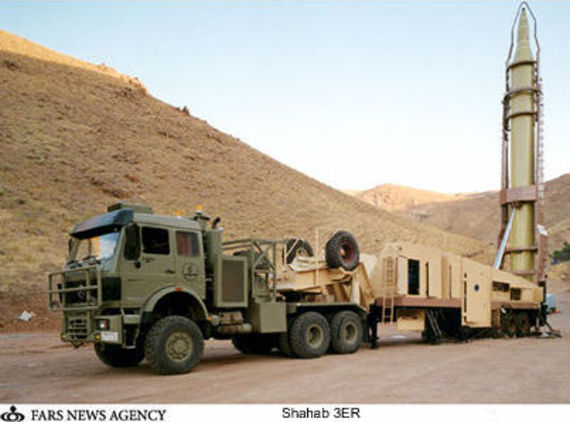
Iranian Shahab 3 mobile ballistic missile. Picture courtesy FARS News Agency
The final dismantling of the economic sanctions against Iran by the United States and the European Union would not be completed until October 2016. By then, the consensus of intelligence agencies worldwide was that the emergence of a nuclear armed Iran was a forgone conclusion. The only questions left unanswered were: how soon would it happen, would the Tehran government attempt to secretly circumvent the terms of the Joint Comprehensive Plan of Action otherwise known as the P5+1 agreement and what, if anything, either covertly or publically, would the United States and its European allies do in the event the Iranian violations were discovered?
In secret Congressional testimony in March of 2017, Carly Fiorina, the new director of National Intelligence, confirmed that the CIA had concluded that there was a 95% chance that Iran would have useable nuclear weapons by 2025 and that there was a 75% chance they would have such weapons by 2020. Britain's Secret Intelligence Service, commonly known as MI 6 (Military Intelligence, Section 6) was slightly more optimistic, it had predicted a 90% probability that Iran would possess useable nuclear weapons by 2025 and only a 50% chance they would have such weapons by 2020.
The events leading up to the actual disclosure of Iran's nuclear weapons arsenal began quietly enough. On June 15, 2020 at 11:30 AM, local time, (18:30 Zulu) a threat analyst at the Joint Air Defense Command at the Cheyenne Mountain Complex, popularly known as Crystal Palace, monitoring the feed from an infrared satellite over the Eastern Mediterranean logged what appeared to be a heat plume about 350 miles southwest of the Indian port of Mumbai just on the edge of the satellite's coverage track.
Following established protocols he logged the incident and attempted to track a trajectory. He also immediately advised a U.S. Air Force AWACS over the Persian Gulf of what appeared to be a missile launch. The AWACS radar operator confirmed the existence of a heat plume in the eastern Arabian Sea, but was out of range to determine a trajectory. The missile, which appeared to be moving on a south-southeast track, quickly passed out of the satellite's range and the operator, with only 10 seconds worth of telemetry, was unable to determine the precise trajectory of what appeared to be a relatively slow moving missile. The incident was written up, technically it was a UFO, unidentified flying object, most likely a missile test being carried out by the Indian Navy.
The incident might have been forgotten, one of dozens of such unexplained events that are monitored each year by the Air Defense Command. Two weeks later, the Pentagon's Office for Naval Liaison, the first contact point between the Pentagon and the foreign Naval Attaches accredited to the United States, received a meeting request from the Indian Naval Attaché. The meeting was brief. Why had the United States conducted a missile test within 500 miles of the Indian coast the Indian attaché demanded? Long standing, though unofficial, agreements between the U.S. Navy and the Indian government required the U.S. to advise India of any test missile launches in its proximity and that no launches should take place within 500 miles of its coast.
The Director of Naval Liaison, a two star admiral, replied that he was unaware of any navy tests in that area but promised to investigate. Three days later he confirmed to the Indian Naval Attaché that no U.S. government agency had conducted any missile tests in that vicinity and that analysts at the Joint Air Defense Command had assumed it was an Indian Navy test. He also asked for a copy of any telemetry that had been captured by the Indians on the missile's trajectory.
The Indian telemetry data arrived a few days later and was passed on to the Office of Naval Intelligence and to the Director of National Intelligence. The data raised more questions than it answered. Although it clearly confirmed that a missile launch had taken place, the heat signature was too small and the speed was to slow to be an ICBM and the speed was too fast to be a cruise missile. Moreover, the lack of any adjustment in the trajectory also suggested it was not a cruise missile.
Indeed, the relatively low burn time, a little more than a minute, suggested a relatively short range, roughly 400 nautical miles, and was more reminiscent of first generation missile technology like the World War II era V-2 missiles. There are only about a half dozen countries that h